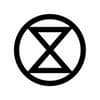Podcast
Questions and Answers
Which of the following products is an example of production by extraction or separation?
Which of the following products is an example of production by extraction or separation?
- Kerosene (correct)
- Car
- Television
- Furniture
What is a key characteristic of continuous or mass production?
What is a key characteristic of continuous or mass production?
- Use of general purpose machines
- High cost of production per unit
- Automatic material handling systems (correct)
- High degree of product variation
Which statement best describes job or unit production?
Which statement best describes job or unit production?
- Products are manufactured continuously over time.
- High levels of in-process inventory are typical. (correct)
- Production schedules are strictly adhered to.
- The system employs only unskilled labor.
Which of the following is NOT a characteristic of mass production?
Which of the following is NOT a characteristic of mass production?
What is a common feature of intermittent or batch production?
What is a common feature of intermittent or batch production?
What is typically true about labor used in mass production systems?
What is typically true about labor used in mass production systems?
Which of the following describes the planning and control in continuous production systems?
Which of the following describes the planning and control in continuous production systems?
Which characteristic is associated with job production as opposed to mass production?
Which characteristic is associated with job production as opposed to mass production?
What is the main objective of process planning?
What is the main objective of process planning?
Why is it important for labor to be skilled in a semi-automatic production environment?
Why is it important for labor to be skilled in a semi-automatic production environment?
What is included in the Bill Of Materials (BOM)?
What is included in the Bill Of Materials (BOM)?
What should be decided when preparing for process planning?
What should be decided when preparing for process planning?
What role does the analysis of the finished product play in process planning?
What role does the analysis of the finished product play in process planning?
What is a key feature of semi-automatic, special purpose machines?
What is a key feature of semi-automatic, special purpose machines?
Which aspect is NOT a goal of process planning?
Which aspect is NOT a goal of process planning?
What is a consideration when selecting the appropriate blank size in process planning?
What is a consideration when selecting the appropriate blank size in process planning?
Flashcards are hidden until you start studying
Study Notes
Different Forms of Production Systems
- Production by Extraction or Separation: Involves processes that extract resources from nature, e.g., petrol, kerosene, and sugar.
- Production by Assembly: Focuses on assembling various components into a final product, e.g., cars, televisions, and furniture.
Characteristics of Continuous/Mass Production
- Manufacturing the same product over extended periods allows for a systematic machine arrangement.
- Utilizes standardized methods and machines throughout part manufacturing.
- Mostly uses semi-automatic or fully automatic equipment to enhance efficiency.
- Automated material handling systems, such as conveyors, streamline production.
- Semi-skilled workers fill positions since automation reduces the need for extensive manual labor.
- Easier planning and control are possible due to the product's predefined flow along production lines.
- Unit production costs are low due to high production rates and efficiency.
- Low in-process inventories result from simplified scheduling and implementation.
Characteristics of Job or Unit Production
- Machines and methods are general-purpose, accommodating frequent product changes.
- Skilled manpower is essential for adapting to varying work conditions.
- Lack of firm schedules due to unpredictable production data.
- Typically high in-process inventory, influenced by the absence of accurate planning.
- Product costs are elevated from high material and labor expenditures.
- Machines are grouped functionally, enhancing flexibility to produce different product types.
- Material handling systems must adapt to meet changing product requirements.
Characteristics of Intermittent/Batch Production
- Products manufactured in batches allow for some economies of scale.
- Machines grouped based on functionality, similar to job shop practices.
- Utilizes semi-automatic and special-purpose machines for standard products.
- Skilled labor is required to manage diverse product batches.
- High in-process inventory is common due to specific layout and handling policies.
- Semi-automatic material handling systems align well with semi-automatic machinery.
Process Planning
- Defined as the process of determining the necessary operations and sequences to create a product.
- Involves selecting, specifying processes, machine tools, and equipment to transform raw materials into finished products per design specifications.
- Purpose:
- Establish clear requirements to facilitate machine and tool design or purchase.
- Ensure coordination among all manufacturing personnel.
- Develop a plan for optimal use of available resources and facilities.
Steps in Process Planning
- Analyze the finished product to identify sub-assemblies and components for manufacturing.
- Prepare a Bill of Materials (BOM) to serve as a foundation for raw material purchases.
- Determine which components to manufacture in-house versus which to procure externally, making a "make or buy" decision.
- Select an appropriate size of raw materials (blank size) and evaluate the most cost-effective methods for component production, comparing potential processes to finalize choices.
Studying That Suits You
Use AI to generate personalized quizzes and flashcards to suit your learning preferences.





